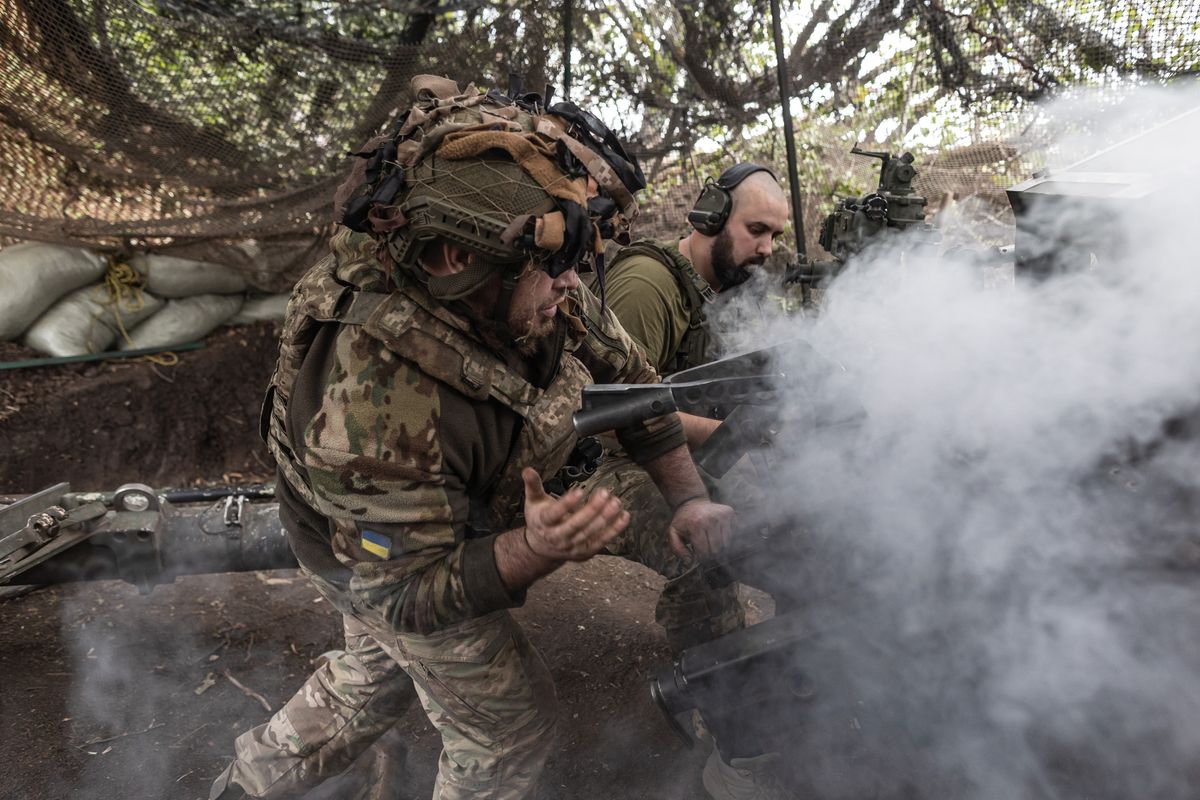OPINION — Two senior U.S. military commanders in the Indo-Pacific area this week questioned whether North Korea would ever denuclearize, just 12 days before the next scheduled summit in Hanoi between President Donald Trump and North Korean Chairman Kim Jong-un.
While Trump has repeatedly said that "things are going very well with North Korea," Admiral Philip S. Davidson, Commander, United States Indo-Pacific Command, told the Senate Armed Services Committee on Tuesday that it “is unlikely that Korea will give up all of its nuclear weapons or production capabilities, but seeks to negotiate partial denuclearization in exchange for U.S. and international concessions.”
Davidson, in his prepared statement, pointed out that his command’s “assessment on North Korean denuclearization is consistent with the Intelligence Community position.” At his presentation of the Worldwide Threat Assessment before the Senate Select Committee on Intelligence just last month, Director of National Intelligence Dan Coats described North Korea as needing to keep its nuclear weapons and production facilities “because its leaders ultimately view nuclear weapons as critical to regime survival."
Davidson also cast doubt on one of Chairman Kim’s actions last year, the blowing up of tunnels at North Korea’s Punggye-ri nuclear test site, which Trump has described as “a very smart and gracious gesture.”
While calling it as a step “in the direction of denuclearization,” Davidson described it as a “reversible” dismantlement, adding, “much needs to be done to make meaningful progress.”
Davidson did call attention to some recent changes representing rapprochement, including dismantling guard posts within the demilitarized zone, removing land mines near Panmunjom and returning the remains of 50 U.S. service members that had been held since the Korean War.
He said, “North Korea has demanded ‘corresponding measures’ from the United States in return for these above actions,” adding that Kim had warned in his 2019 New Year’s speech of a potential “new path,” which could mean “an eventual return to missile and weapons of mass destruction (WMD) testing if he is not satisfied with the pace of negotiations and potential benefits.”
At that same Armed Services hearing, Gen. Robert B. Abrams, Commander, U.S. Forces Korea, told the committee “Little to no verifiable change has occurred in North Korea’s conventional and asymmetric [nuclear] capabilities that continue to hold the United States, South Korea, and our regional allies at risk. For these reasons, the security situation continues to demand an appropriately postured and ready force.”
He did point out, as Davidson did, that there are symbolic changes. As head of the United Nations Command, Abrams noted he is a partner in the South Korea-North Korea talks and as such approved 13,066 border crossings in 2018 compared to just five in 2017. He also said he passed 152 official messages last year, compared to 56 in 2017.
But Abrams noted that while Kim Jong-un in his 2019 New Year’s speech “called for South Korea to halt joint military exercises with the United States,” his own armed forces carried on their own winter training cycle “with a force of over one million engaged in individual and unit-level training throughout the country.”
Abrams said the only change from the North Korean exercise in previous years was less “hostile rhetoric [against Seoul and Washington] and halted media coverage of KJU [Kim Jong-un] attending capstone events such as large-scale, live-fire training or special operations raids on mock-up Alliance [U.S.-South Korean] targets.”
Abrams, said that major, joint U.S.-South Korea exercises last year had been suspended because “we must continuously strike a balance between the clear need to train and exercise military capability and the requirement to create space for and support strategic diplomacy.”
The spring 2018, major joint exercise Foal Eagle was delayed last year to allow for the winter Olympics and then reduced in size when some U.S. strategic assets were not included as participants. Since then, Abrams said, the “size, scope, volume and timing” of joint exercises have been adjusted “to remain in tune with diplomatic and political requirements without sacrificing the training of essential tasks.”
However, Abrams told the senators that he has resumed planning for resumption of the traditional large-scale, spring, Foal Eagle military joint exercise with South Korea for which he has received “full support” from the Pentagon.
In addition, he said, “Since October 2018, we have conducted dozens of small-scale exercises among the components – our air, ground, naval, and marine forces train habitually with their ROK counterparts on the fundamentals of warfighting.”
In fact, despite diplomatic, denuclearization talks, preparation for conventional warfighting continues.
South Korea has increased its defense spending by eight percent for 2019, and in 2018 agreed to $2.160 billion in U.S Foreign Military Sales, including the purchase of P-8A anti-submarine warfare aircraft in support of security commitments shared with the U.S.
Meanwhile, the U.S. is in the midst of spending $784 million on removing outdated munitions from South Korea and restocking pre-positioned munitions, adding ballistic missile defense systems and other wartime equipment in a multi-year program that will be completed in December 2019.
All of this, Abrams said, was aimed at “improving our preparedness to rapidly execute similar activities during contingency conditions.” He added, “As we sustain readiness for any potential provocation or conflict, we support those working toward enduring peace and denuclearization.”
Korean denuclearization remains a fuzzy, long term goal.
Trump’s Special Representative for North Korea Stephen Biegun, after two days in Pyongyang negotiating the format for the upcoming Trump-Kim summit, told South Korean legislators that negotiations on basic issues, such as a timeline, would continue after the two leaders meet.
Last Monday, Stanford University’s Center for International Security and Cooperation, led by former Los Alamos National Laboratory Director Siegfried Hecker, released a study that showed while “the diplomatic initiatives have greatly reduced the threat… North Korea has not halted its fissile materials production in absence of formal negotiations. Our analysis of open-source satellite imagery of the Yongbyon complex led us to estimate they may have added sufficient plutonium and highly enriched uranium for an additional five to seven nuclear weapons on top of our 2017 estimate of approximately 30 weapons.”
In addition, Hecker said that following the Singapore summit, progress “quickly hit a wall when the U.S. side called for the North to produce a full declaration of its nuclear weapons program, to which Pyongyang responded angrily. The rest of the year was up and down.”
Hecker said it was important that North Korea did not flight test missiles of any range in 2018, but he suggested that final denuclearization “will be long and difficult, especially because of the serious trust deficit between Washington and Pyongyang.”
Hecker, who has visited North Korea and its nuclear facilities several times, said he had met with Trump's Special Representative Biegun, when he visited Stanford. Hecker suggested that “North Korea, South Korea, and the U.S. explore cooperative efforts to demilitarize North Korea’s nuclear and missile programs and convert them to civilian nuclear and space programs. Such cooperation has the potential of accelerating the elimination of nuclear weapons and nuclear weapons program. It will, in the long term, also greatly improve the prospects of adequate verification.”













